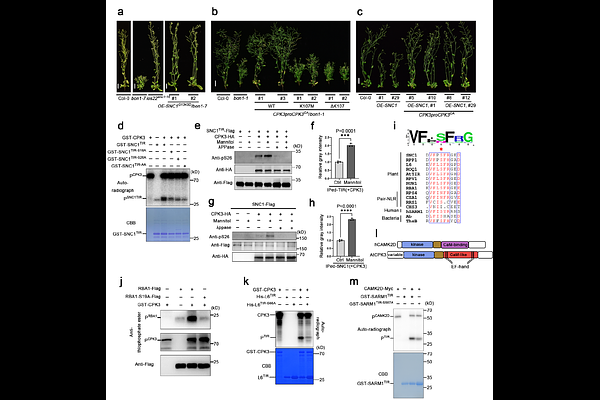TIR immune signaling is blocked by phosphorylation to maintain plant growth

TIR immune signaling is blocked by phosphorylation to maintain plant growth
Li, J.; Chen, S.; Yu, B.; Li, Q.; Liu, R.; Wang, Z.; Wan, L.; Zhao, Y.
AbstractToll/interleukin-1 receptor (TIR) domain proteins are immune signaling components and function as NAD+-cleaving enzymes to activate defense responses. Activation of TIRs represses growth and drives cell death in plants and promotes axon degeneration in animals, but how plant TIRs are repressed remains unclear. Here, we show that TIR NADase activity requires a conserved serine residue spatially close to the catalytic glutamate. The plant Ca2+-dependent protein kinases (CPKs), the mammalian Ca2+/calmodulin-dependent protein kinase II delta (CAMK2D) and TANK binding kinase 1 (TBK1) phosphorylate TIR domains at this conserved serine, which blocks TIR NADase activities and functions and thus maintains growth in plants and suppresses SARM1 TIR signaling in animals, respectively. Our findings define a fundamental molecular mechanism by which phosphorylation at a conserved serine residue blocks TIR signaling to balance growth and defense trade-offs.